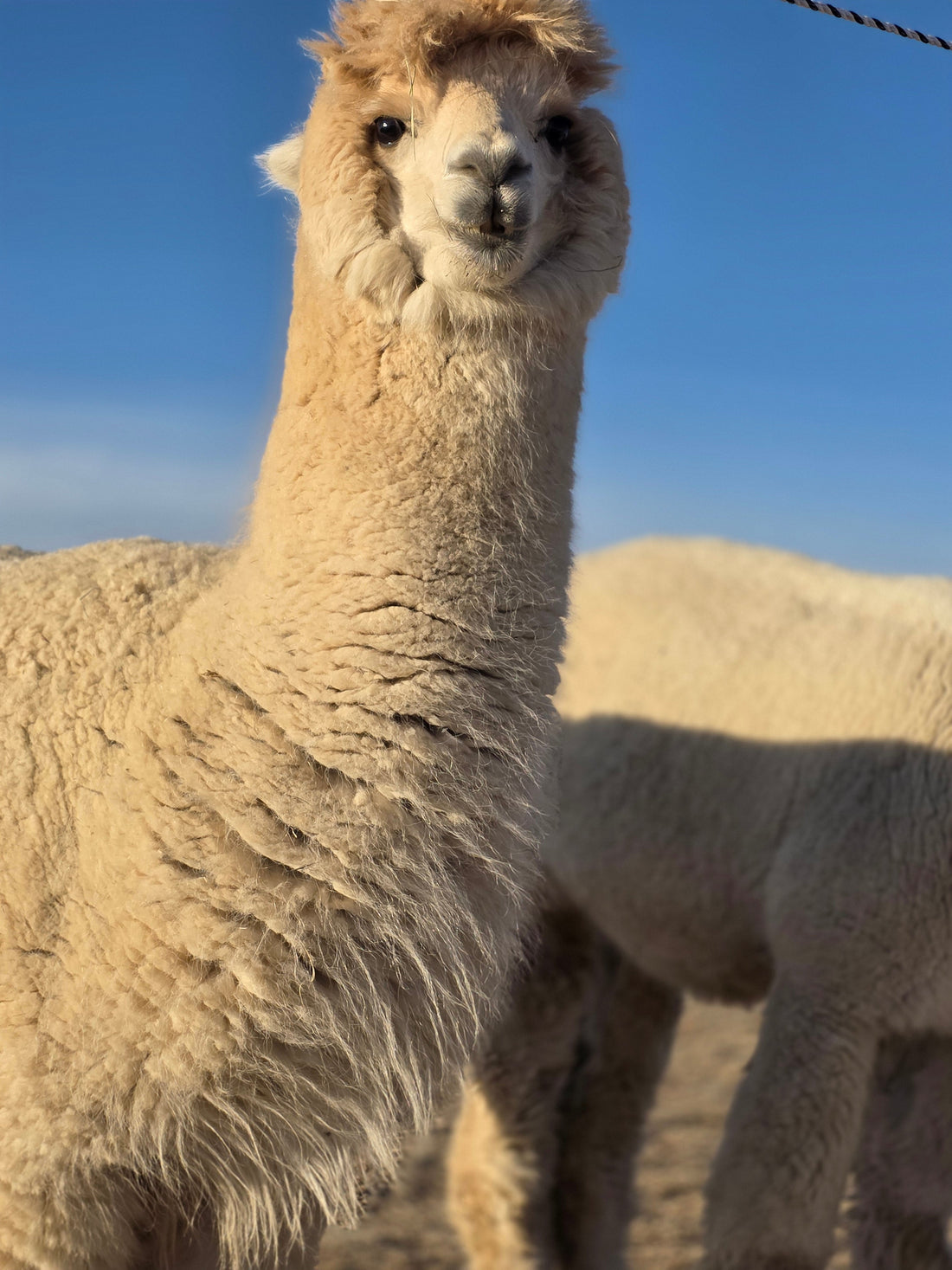
What Is a Fiber Farm? (And Why They Matter More Than Ever)
Share
🐑 Fiber Farm Fridays | Week 1
What Is a Fiber Farm? (And Why They Matter More Than Ever)
Welcome to Fiber Farm Fridays here at Moe Acres! This is our weekly series where we go back to basics and walk you through everything fiber farming and fiber processing—whether you’re dreaming of your own farm someday or just curious about where your yarn really comes from.
What exactly is a fiber farm? And why are they more important than ever?
So... What Is a Fiber Farm?
At its simplest, a fiber farm is a farm dedicated to raising animals whose fiber (think wool, fleece, hair) can be harvested, processed, and turned into yarn, fabric, felt, or other beautiful, usable goods.
On our farm, we raise alpacas, but fiber farms can also raise:
- Sheep (for wool)
- Goats (like Angoras, for mohair; or Cashmere goats)
- Llamas (their fiber is coarser than alpaca but still has its uses)
- Rabbits (Angora rabbits produce incredibly soft fiber)
Some farms focus on one species, while others (like Moe Acres soon!) raise several to offer a variety of fibers with different textures, colors, and uses.

angora goat curls
Why Start a Fiber Farm?
For us, it was a combination of passion, purpose, and a little bit of old-fashioned stubbornness.
But fiber farms serve a bigger mission, too:
✅ Preserve Heritage Breeds: Many traditional fiber animals are disappearing. By raising them, we help protect their genetics and keep their unique fibers alive.
✅ Support Sustainable, Local Textiles: The fiber industry can be slow, ethical, and sustainable—but only if farms like ours commit to raising healthy animals and processing fiber responsibly.
✅ Reconnect People to Where Their Products Come From: Most people have no idea where yarn or wool comes from. Fiber farms bridge that gap, showing folks the process from pasture to product.
✅ Provide an Income Stream for Small Farmers: Fiber animals can be a solid part of a diversified farm business. The fiber can be sold raw, processed into yarn, or used for handmade goods.
What Makes Fiber Farming Different from Regular Livestock Farming?
Raising fiber animals isn’t just about livestock.
It’s about managing fiber quality—every day of the year.
We focus on:
- Proper nutrition (healthy animals grow healthy fleece)
- Clean pastures and barns (less hay and dirt means cleaner fleece)
- Gentle handling (stress can affect fiber quality!)
- Shearing skills and timing (shear once a year for most animals, and timing matters!)
A fiber farmer is basically part livestock manager, part textile artist, and part soil conservationist. It's a labor of love—and we wouldn’t have it any other way.

Why Fiber Farms Matter More Than Ever
In a world of fast fashion and mass production, fiber farms are keeping the slow, sustainable, and ethical traditions alive.
Here’s why that’s important:
- Local fiber reduces waste and carbon footprints
- Handcrafted yarns and textiles are higher quality and longer lasting
- People are craving connection—to nature, animals, and the process behind what they buy
When you support a fiber farm, you’re not just buying yarn or wool.
You’re investing in: ✨ Ethical animal care
✨ A sustainable, closed-loop system
✨ Tradition and craftsmanship that’s been around for centuries
✨ A future where “slow fashion” isn’t just a buzzword
What’s Next?
Next week, we’re talking about Raising Happy, Healthy Fiber Animals —whether you’re thinking of adding a couple of sheep to your backyard or dreaming big about an alpaca herd like ours.
Got questions? Curious about a certain fiber animal? Drop them in the comments or DM me on Instagram [@moe.acres.farm.and.fiber.mill]
I’m always happy to chat about fluffy things!
Until then,
Stay cozy,
Nicole